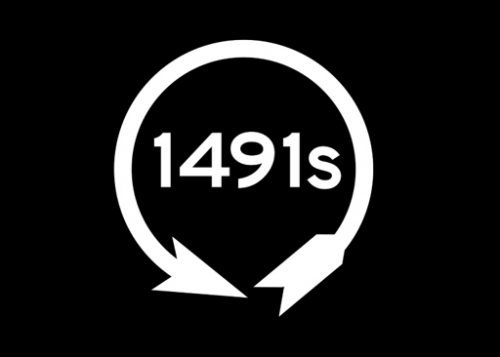You are here
Introducing Rhetorical Analysis with the 1491s
Primary tabs

Image from the 1491s, "I'm An Indian Too," youtube video.
This lesson plan uses the 1491s' youtube videos "I'm an Indian Too" and "Lincoln Was a Douche" to introduce students to rhetorical analysis.
Learning how to research on computers for contextual, historical and biographical information.
Preferably a computer for each student group. However, if students bring in tablets or laptops, this lesson plan could be adapted to classrooms without computers for each student.
Recently, the 1491s appeared on Jon Stewart's The Daily Show to address the controversy over the name of the Washington football team. I have based this lesson plan on the assumption that students perhaps saw The Daily Show episode, but probably do not know who the 1491s are. I want to use this assignment to introduce them to the 1491s and to rhetorical analysis at the same time. After reviewing the chapter on rhetorical analysis and upcoming assignments, I would have the students watch the 1491s' "I'm an Indian Too" on youtube. As a class, we would discuss questions about speaker, audience, situation, and argument. For example, who is the audience for this youtube video? Are they explicit or implicit? Who are the speakers in this video (which doesn't have any obvious speakers, aside from the singer). Next, I would have them get into groups and watch the 1491s' "Lincoln Was a Douche" youtube video. Then, in their groups, I would have them answer the questions on the 1491s worksheet about audience, speaker and text. After they've completed that task, we would discuss their groups' answers. Then I would ask them to think about how researching the 1491s and the historical context of Lincoln's hanging of the Indians would change how they view the video. They would then get on their individual computers and try looking for contextual, historical and biographical information about the 1491s and the historical event they reference in the "Lincoln Was a Douche" video. After giving them some time to research, we would discuss as a class their findings.
Familiarize yourself with the 1491s through their youtube channel and appearance on The Daily Show. Also review questions about audience, speaker, and text.
Once you have watched the 1491s' "I'm an Indian Too" on youtube as a class, engage in a discussion about the speaker, audience, situation, and the text's argument. Next, get into groups to watch the 1491s' "Lincoln Was a Douche" and answer the questions on the worksheet about audience, speaker, and text. Finally, get on computers, and try looking for contextual and biographical information about the 1491s.
Go around to the different groups and check in during the group work about how they're doing and if they're understanding the breakdown of rhetorical analysis. When the students are working individually researching on the computers, again go around the class checking in with the students and suggesting key terms to look up about the 1491s and the hanging.
I think the students were challenged by the 1491s, but in a productive way. Thinking about the audience, speaker and text and possible arguments the 1491s might have been making with these videos led to interesting discussions about representations of Native Americans in the media.
The 1491s: “Lincoln Was a Douche” Exercise
After watching the 1491s’ sketch “Lincoln Was a Douche,” answer the following questions in your group about speaker, audience, situation and text.
- Who is the speaker?
- Is it a single person? A company? An ad firm?
- Is there a difference between the “ostensible” speaker, the “real” speaker, and the “implied” speaker?
- Who is the audience?
- Is it implicit? Explicit? Ideal? Real?
- What values does this audience have?
- What concerns them?
- What is the situation?
- What contextual evidence? In which venue does this source appear?
- What is the history behind this text?
- What is the exigency?
- What is the text arguing?
- The text argues that____________________________________________.
- Is this argument implicit or explicit?
- What reasons does the author give for this argument?
- What evidence does the author provide in support of this argument?
This lesson plan was designed for a Rhetoric 306 course.
-

- Log in to post comments

